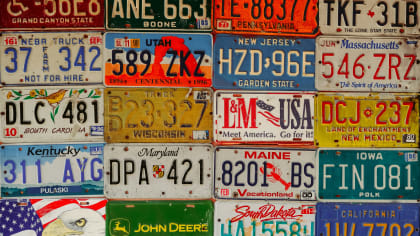JAMES GARNER’S MOTORING LIFE
Grand Prix, Baja, Rockford Files & More
This article is from our archives and has not been updated and integrated with our "new" site yet... Even so, it's still awesome - so keep reading!
Published on Sun, Dec 14, 2014
By: The LACar Editorial Staff

BOOK REVIEW
JAMES GARNER’S MOTORING LIFE
Grand Prix the Movie, Baja, The Rockford Files, and More
By Matt Stone ©2014
CarTech, Inc. (cartecbooks.com)
159 pages, Forward by Bob Bondurant
U.S. $34.95
Review and pictures by Doug Stokes
Like this new book’s author, Matt Stone, I only met James Garner one time (strangely enough at a Motor Press Guild event that both Matt and I were attending at the Peterson Museum). And then I didn’t talk to Mister Garner about cars or racing*. But, like millions of others who never even had that brief opportunity, I’ve always somehow felt that I knew this handsome, soft-spoken movie star.
The fact that we all knew how much he really enjoyed automobiles in general and racing in particular along with the persona that he often portrayed on film, all added up to what seemed almost like a personal friendship with the guy.
Matt’s new book, ostensibly about Mister Garner’s motoring life, ends up being as much a general roadmap for the man. This is a guy who loved cars and the people who are part and parcel of a very well-lived motoring life.
Starting with “Garner’s Garage”, Stone takes us on a walk around of a number of the cars that James Garner owned and operated in real life, like his 1956 Plymouth Fury, a limited run (about 4,500) muscle car—white, with a metallic gold (metal) side stripe, and his beloved Mini Cooper S. It is said that, movie star or not, passersby would stop what they were doing to watch Garner fold his 6’3” frame into that baby’s shoebox on four wheels.
He was once given a new 1959 Corvette as part of the payment for a TV show appearance. In the book Stone indicates that Garner said that he wished he had kept that car, making him even more of a brother in arms to everyone who now regrets selling a special car so long ago. The list of his private cars goes on, but the car that we all really want to know about is the Yomura. Right?
Grand Prix, the movie, will be 50 years old in 2016. I almost don’t believe my own words and had to look that fact up. Even more to the point: In that half century, only one other theatrical movie (made in 1971 and called Le Mans) has ever come closer to the truth that John Frankenheimer put on film all those years ago.
Stone’s book has a wonderful time telling tales about the “making of” the landmark film from all sides of the camera. The behind the scenes tidbits and outtakes make re-screening the movie a must and (as if one wasn’t already a fan) readers more respectful of Mister Garner’s acting and driving abilities. Doing all of his own driving (and diving too, that really was him in the drink in Monaco) for the film; he was as admired by the F1 drivers assembled for the film as he was by his fellow actors.

When Mister Garner slipped off his Pete Aron helmet and came back stateside, the racing virus was running rampant in his veins. At the same time, his stature as an actor was revving up as well. He wanted to race, compete, like guys like Steve McQueen and Dick Smothers, road racing in cool sports or hot single-seat formula cars on established road courses as they did. But the studio was not so keen on that. On the other hand, off-road racing, driving flat-out for hours on end in the choking dirt of the Mexican wasteland, was perfectly okay for their man.
For some reason, unknown to all reason and logic, the studio suits who did not want to see Garner in a Formula A Lola at Riverside (where safety/medical workers are mere yards away at all times, and medical facilities are only a few miles distant). But they okayed him bombing alone with only a co-driver over the trackless wastes of Baja (often times in the middle of the night) in the days way before GPS. Go figure that one.
But, as Garner always does, he makes friends and a solid reputation for himself among the pros in that devilishly dusty and dangerous form of racing. From Bill Stroppe to Vic Hickey and to guys like Jack Mendenhall and Don Adams, all of the top people respected not only his driving talent, but his self-deprecating personal approach to race driving. He was a natural who was having the time of his life, but not looking to put anyone out of their ride.
By the way, I should mention that author Stone has left not a one unturned (cheap pun … keep the change) in using page after page of wonderfully-instuctful photos that illustrate each and every phase of this gentleman’s automotive life. The photo selection here flows right into the text. Many of the shots came from private collections and all work to augment the text admirably.
And then there’s “AIR”—James Garner’s American International Racing (Team). It’s a road racing team in the very best traditions of the 1960s, when Sebring, Riverside, and Road America were sacred shrines to a newly-professional class of drivers and owners.
Teams were the thing, with pioneers like Briggs Cunningham and Lance Reventlow only a few years earlier running multi-car operations that came to the track in enclosed trailers and 18-wheelers with everyone wearing team colors with a catchy name embroidered across the back. Such was AIR. There was money in it—all going one way, and that was out of pocket for the team.
But good cars (Lolas and Corvettes mostly) and good drivers (Dick Guldstrand, Davey Jordan, Scooter Patrick, Herb Caplan, and Ed Leslie) were not enough to overcome the rising tide of far better bankrolled racing teams. I suspect that, cast only a few years later, when sponsors started to pay large sums to have their product’s names on race cars (and of course, had Garner gone along with the trend), AIR would have done far better. Unfortunately, the costs (time and money) caught up with the reality of being a movie star.
It was a wonderful dream, a great time, but a shooting star in terms of longevity. As Stone tells us, AIR left one shining document of its existence: A film called, “The Racing Scene” (the quote marks making it to the movie poster). Garner’s own production company (Cherokee) made the film during the 1969 racing season. The film is good fun and stands as an interesting documentary of the technical side of the racing of the day when aero-downforce was almost a black art, and things like the question of whether or not to fit wings to F5000 cars was still part of every practice session. There’s also a great section on Garner and Patrick running the Baja 500. The DVD is available and recommended as a visual version of the AIR section of this book.

Stone’s chapter on The Rockford Files lovingly relates every aspect of that classic TV show and the (GM-supplied) rolling stock that was featured therein. Again, good fun with the small details that Matt takes his time with here. In his final chapter, Stone relates all of the other places that Jim Garner interacted with the car world, like the honor of driving the pace car at the Indy 500 three times, and just generally hanging out at local race meetings like Long Beach and Ontario. In the end, this is a tribute, an honor to a guy who all guy guys (and gals) not-so-secretly thought of more as a best friend … not a movie star (which he was**). -DS Sadly Mister Garner passed away just as this book was going to press, it and his breezy personal memoir with Jon Winokur, “The Garner Files” (published in 2012) are two windows into a very cool dude, who never overdid the coolness, nor overstayed his welcome. *For some reason I talked to him about a little-known movie that he made called “Sunset”, which is about the early days of the movie industry in Los Angeles. ** While you’re ordering that copy of “The Racing Scene” pick up a copy of “The Americanization of Emily”). SIDEBAR: Author, Magazine Editor, TV pundit, (and much more) Matt Stone has written a number of very easy to read books that wrap themselves around automotive themes. And understand, I mean no slight with that “easy to read” line. I mean that, like the one just reviewed above, his books are well written and logical. The “easy” part is more due to the credibility he brings to the subject. Check out his books on Paul Newman and Steve McQueen and their deep love affairs with gasoline and wheels. For something different get your hands on History’s Greatest Automotive Mysteries a great one-chapter-a-night book that he co-authored with Preston Lerner. Anticipating Stone’s next tome has become a time honored tradition around here, each has been different, each has been automotive in ken, and each has deftly made its subject not only informative but interesting. In other words: this is why I read books. To purchase "James Garner’s Motoring Life" on Amazon, click here.




